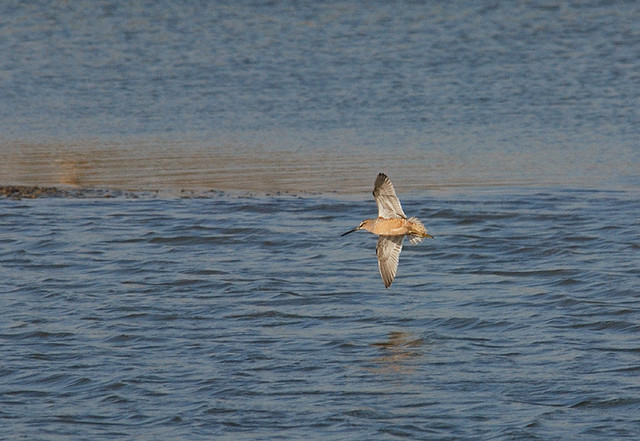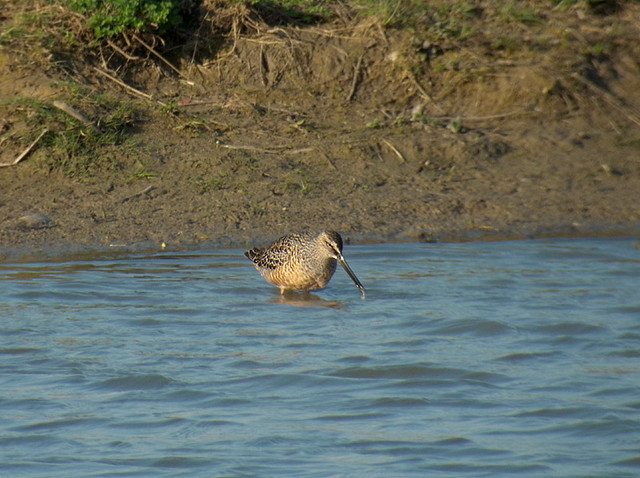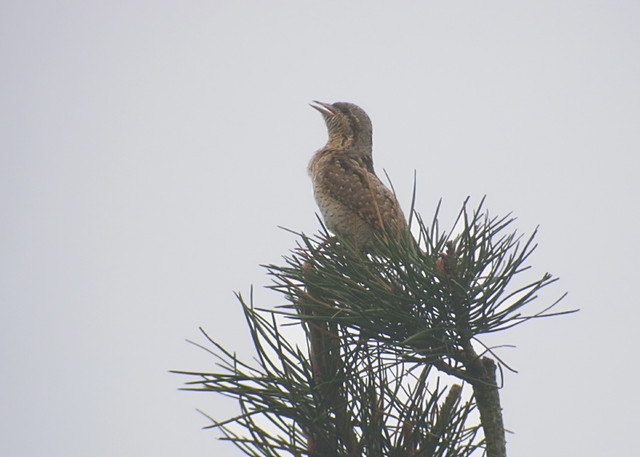1. Long-billed Dowitcher on 26 April at Lingewal, south of Arnhem and
2. A beautiful singing Wryneck at the Veluwe on 8 and 9 May
The Long-billed Dowitcher was switching to summer plumage and was fouraging along a broad ditch with silky beds. The bird was discoverd by Tim de Boer at the end of the afternoon. After a quick dinner we drove not keeping within the speed limit of 120 to Arnhem The weather was good with a strong wind, so digiscoping was quite difficult. I managed to take some reasonable pictures.
The bird flew up sometimes and disappeared in the surrounding meadows, but returned to the broad ditch. It is a unusual bird: as far as colour and shape is concerned it reminds me to a Bar-tailed Godwit, who is yet bigger. The long straight bill and the typical way of feeding reminds to a snipe. Both birds have the same size. The dutch name "Great Grey Snipe" applies anly to the winter plumage. In breeding plumage the bird has an entirely rufous belly, breast and neck wih some small dark bars.
A month later, on 24 May I saw a Long-billed Dowitcher in full summer plumage at a small reserve near Twisk
 |
| Long-billed Dowitcher in flight |
The behaviour of the Wryneck was very special since the bird was singing the whole month of May. In the early morning you could hear the bird singing from a great distance. He was often singing in a dead birch, sometimes he flew away and was singing at the other end of the field in the top of a pine.
I knew that there was seen a Wryneck, but didn't know the precise spot. Just returned from my trip to Eastern Germany (Feldberg and surroundings) I tried to find the Wryneck on 8 May. It was a gloomy morning with litlle rain, but no wind. Entering the "Kootwijkse Veld"I heard already the wellknown sound of a Wryneck "kie kie kie kie kie". So I followed the call. The bird was singing in the top of an oak tree. Then moved to a birch with a hole in its trunk.
After a long time of singing the bird flew away. I found the bird again at the other end of the field. The bird hopped from tree to tree. Finally it flew to the top of a pine a started singing again (see second picture). For me it was the first time to see a singing Wryneck at the Veluwe at such a close distance.
The next morning I went back with Fabian. The bird was singing in the same birch for a long time. At 24 May we visit the "heide" at 9.30 pm, waiting for the right time to hear the Scops Owl some kilometres away. The bird was still trying to atract a female by intensive singing.


